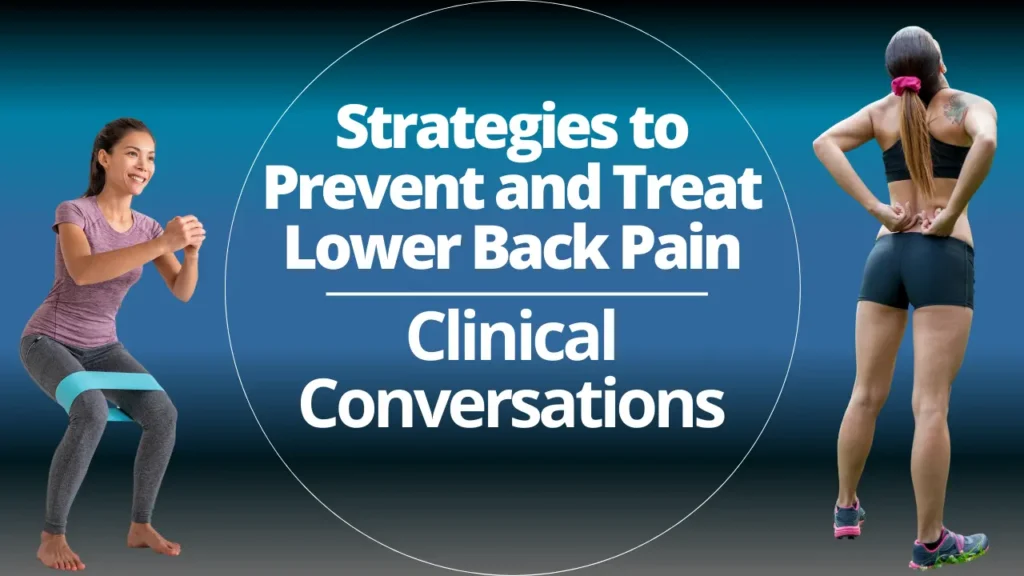
This blog explores Strategies to Prevent and Treat Lower Back Pain as directed by Physical Therapists Alex Guanco and Ashley Langford. Scroll down to watch the YouTube Video.
Lower back pain (LBP) is a common condition that affects millions globally, irrespective of age or occupation. It’s a leading cause of disability and often impacts quality of life, making understanding its management crucial.
The following insights are invaluable for anyone seeking to better understand and manage this pervasive condition.
Understanding the Prevalence and Impact of Lower Back Pain
Lower back pain affects almost everyone at some point in their lives. Whether it’s missing work or school, the impact can be significant.
This pain is not just confined to adults; children and teenagers are equally at risk, indicating the need for broad awareness and preventive measures.
The Core Muscle’s Role in Lower Back Health
Contrary to popular belief, the core encompasses more than just abdominal muscles. It includes back muscles, hip flexors, and glutes, forming a complex network that supports the spine.
Strengthening these core muscles is crucial for maintaining proper posture and reducing the risk of LBP. Balanced core strength supports the lower back and prevents the imbalances that often lead to discomfort.
The Connection Between Posture and Back Pain
While poor posture is commonly blamed for back issues, the relationship between the two is not as direct as once thought.
Poor posture can exacerbate existing back problems but isn’t typically the sole cause. Understanding one’s individual posture and working within personal physical limitations can significantly help manage and stop the condition
Watch the Clinical Conversations YouTube video with Ashley Langford and Alex Guanco.
The Importance of Timely Intervention
Seeking early intervention for all pain, ideally within the first few days, can prevent conditions from worsening.
Physical therapy within the first 16 days, as noted by the experts, can lead to the best outcomes. Early treatment helps prevent the transition from acute to chronic back pain, emphasizing the importance of accessibility to professional care immediately after onset.
Self-Care and Prevention: Simple Steps Can Help
Walking is an effective form of exercise for maintaining back health. It not only helps in strengthening the muscles and improving posture but also benefits mental health.
Regular movement is essential to prevent muscle stiffness and weakness that contribute to the development and exacerbation of LBP.
Full body strength and mobility exercises that encompass our functional patterns support lower back and overall health and wellbeing.
Breathing and postural awareness are also key steps as they help the body relax and remain safe during activities.
Conclusion
Understanding LBP through the lens of core strength, posture, breathing, and movement highlights the importance of a proactive approach to management and prevention.
Regular physical activity, awareness, and early intervention are key strategies in managing lower back pain effectively.